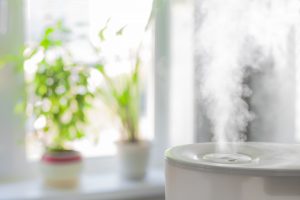
Many people do not realize they are breathing unhealthy air. In fact, nearly 95 percent of the global population is taking in unhealthy air.
This can lead to adverse health consequences. For starters, it can irritate your throat, eyes, and nose.
Poor air quality is also known to cause respiratory issues and aggravate asthma. Most serious, unhealthy air may cause cardiovascular and heart problems.
Read on to learn indoor air quality facts to improve your lifestyle. Explore 7 facts that you need to know about air quality.
1. Indoor Air Is More Polluted Than Outdoor Air
A popular misconception is that indoor air is pollution-free. The reality is that indoor air is up to five times more polluted than outdoor air.
Your home entraps various air contaminants. No air filter is powerful enough to eliminate all the chemicals and dust in your home air.
2. People Spend More Time Indoors Than Outdoors
Did you know that the average American spends 90 percent of his time indoors? This is important because of the fact outlined above.
By spending more time indoors, Americans are exposed to a greater amount of airborne pollutants. Ultimately, this is an unhealthy societal norm.
3. All Types of Homes Have Airborne Pollutants
Another misconception is that densely populated cities have more pollution than rural areas. The Environmental Protection Agency (EPA) has concluded that all types of homes have dangerous levels of contaminants.
Rural areas may be more susceptible to airborne pollutants such as pesticides. Other contaminants such as pet dander or dust mites are present no matter where you live.
4. Children Are Suffering
Poor indoor air conditions are leading to severe health consequences for children. For example, a growing number of children have asthma and severe allergies.
Homeowners need to emphasize the air quality that their children intake. It is important to change filters routinely, use air purifiers, and perform annual mold inspections.
5. Household Dust Is Contaminated With Chemicals
Air quality testing of household dust revealed that the average home is littered with chemicals. In fact, the study showed the presence of 45 different chemicals on average.
The chemicals are often found on toys, cookware, and other home products. This is especially dangerous for young children because they commonly put objects in their mouth.
6. Indoor Air Treatments Lead to Better Sleep
An obvious byproduct of treating your indoor air is improved health conditions. One area of significant improvement is the sleep quality.
Some medical research suggests a link between sleep apnea and poor indoor air. Contaminants in the air reduce oxygen counts and interrupt sleep cycles.
7. Improving Air Quality Saves You Money
For starters, better air quality leads to a healthy lifestyle and less medical bills. Also, your energy costs will be lower as well.
A treated home will place less strain on its heating and air conditioning systems. In optimal conditions, the units are used less frequently and last longer.
Indoor Air Quality Facts – Wrapping It Up
Emphasizing good air quality is sure to improve the quality of life. There are so many benefits to clean air including improved health and cheaper energy bills.
If you want to learn more about indoor air quality facts, please contact us to schedule an appointment.
